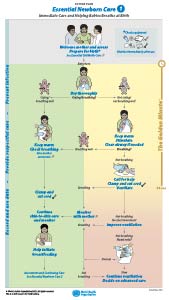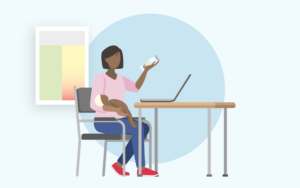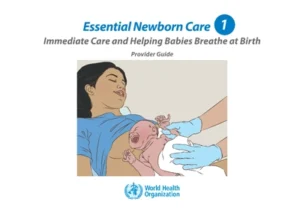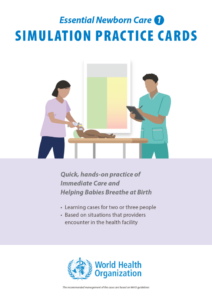Essential Newborn Care 1
Provide better care to newborns, and save the lives of those who suffer birth asphyxia.
Introduction
Essential Newborn Care 1 (ENC 1) is the first part of WHO’s Essential Newborn Care Course. It focuses on the care of babies from birth to 60 minutes after birth. ENC 1 incorporates all content of the Helping Babies Breathe (HBB) program, updated to align with WHO recommendations and guidelines. Learn about the key updates from HBB to ENC 1 in the Summary of Changes.
Learning objectives
- Newborn resuscitation within the Golden Minute
- Keeping babies warm
- Promoting exclusive breastfeeding
- Preventing infection
- Treating mother and baby with respect
- Keeping records to help provide the best care
Duration
Two continuous days, or 5-8 shorter sessions.
Facilitator-to-participant ratio
Groups: 1 facilitator for every group of 6 participants. The participants will practice in pairs.
Learning materials
Download and preview the materials you will need. You should also have printed materials during a training. You can order printed materials from Laerdal, or download the printing files free of charge to print locally. To calculate how many copies you need, keep in mind that there should be one facilitator for every group of six participants.
These materials are copywrited and should not be altered. Contact us for inquiries about translations and adaptations.
Action Plan
A poster showing the steps to take during care, to use both during training and as a job aid for clinical practice.
1 per group (facilitator + 6 participants), and enough to leave at each facility to be used in clinical care.
- Action PlanEnglish

ENC 1 Online
Online tool for facilitation of the training. It includes demonstrations videos, prompts for discussion, and practice sessions.
Select an option
- ENC 1 OnlineEnglish
- How to facilitate ENC1 OnlineEnglish

Flip Chart
Paper-based facilitation tool, with guidance for facilitators to demonstrate, lead discussions and support practice.
1 per group (facilitator + 6 participants)
Select an option
- Flip ChartEnglish
- How to facilitate with Flip ChartEnglish

Provider Guide
A booklet for every healthcare worker to use during the training and keep afterwards. For reviewing content and practicing skills overtime.
1 per participant
- Provider GuideEnglish

Simulation Practice Cards
Cards with different scenarios to practice in teams, during and after the training.
1 per participant
Select an option

Videos
-
Prepare for birth
-
Routine care
- Dry thoroughly
- Demonstration: Dry thoroughly
- Is the baby crying/breathing well?
- Demonstration: Is the baby breathing well?
- Keep warm, check breathing
- Demonstration: Keep warm, check breathing
- Clamp and cut the cord
- Demonstration: Clamp or tie and cut the umbilical cord
- Demonstration: Continued skin to skin care
- Demonstration: Help initiate breastfeeding
-
The Golden Minute
- Stimulate breathing
- Clear the airway, if needed
- Demonstration: Keep warm, stimulate, clear airway if needed
- Is the baby breathing well?
- Demonstration: Is the baby breathing well?
- Where to resuscitate
- Demonstration: Call for help, Clamp and cut cord, Ventilate
- Begin to ventilate
- Is the chest moving well?
- Demonstration: Is the chest moving or is the baby breathing
-
Continued ventilation
-
Commit to making a difference
Assessments
Download and print these documents to check the knowledge and skills of the participants.
Looking for online LIFT Assessments? Visit laerdal-lift.com
Equipment
Every pair of participants will need these items to practice during the training. The equipment should also be available for practice in the facilities after the training.
- 1 Newborn simulator – we suggest NeoNatalie or NeoNatalie Live
- Pen and paper
- Hand cleaner
- Gloves
- Clock
- Head covering (for baby)
- Cloths (dry and clean)
- Cord ties/clamps
- Stethoscope
- Ventilation bag and mask
- Suction device
- Scissors
- Thermometer
- Syringe
- Optional: Videos and projector or computer
If you are facilitating remotely
- Tablet or computer with camera and microphone
Templates
Download and modify these documents to fit your needs when preparing and evaluating your course.
Package contains:
- Email for calling to evaluation
- Participant certificate
- Invitation to remote course
- Invitation to course
- Agenda for remote course in short sessions
- Agenda remote two day course
- Agenda for course in short sessions
- Agenda two day course